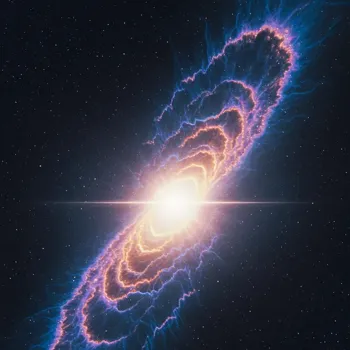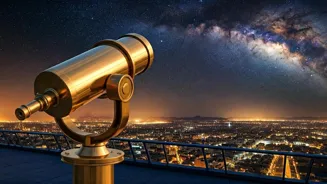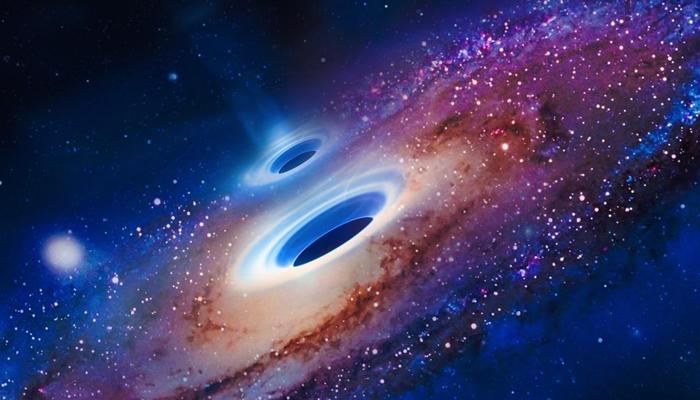Unveiling the Cosmic Mirage: Gravitational Lensing Demystified. Dive into this captivating phenomenon reshaping astronomy!
In the vast expanse of space, light travels in straight lines, right? Well, not
exactly! Thanks to Albert Einstein and his theory of general relativity, we know that gravity can bend the path of light.

This bending creates a cosmic mirage, known as gravitational lensing, a phenomenon that's both visually stunning and immensely helpful for astronomers. Imagine looking at a distant city on a hot day, and the heat waves distort the view—that's a simple analogy for how gravity bends light.
This article will deep dive into this wonderful cosmic effect, uncovering its secrets and exploring its significance.
Gravitational lensing bends light, magnifying distant objects, revealing mass distribution of galaxies
Gravitational lensing occurs when a massive object, like a galaxy or a cluster of galaxies, sits between us and a distant light source. The gravity of this massive object warps the space around it, causing light from the background object to travel along curved paths.

As a result, the light reaching us is bent and magnified, creating distorted and amplified images of the distant object. Think of it like using a magnifying glass, but instead of glass, it’s the gravity of a massive celestial body doing the work.
This cosmic trickery not only allows us to see farther into the universe but also provides valuable information about the mass distribution of the lensing galaxy.
Three types of gravitational lensing: strong, weak, microlensing
There are three main types of gravitational lensing: strong lensing, weak lensing, and microlensing. Strong lensing produces dramatic, easily visible distortions, such as Einstein rings – perfect or near-perfect rings of light formed when the source, lens, and observer are perfectly aligned.

Weak lensing, on the other hand, causes subtle distortions that require statistical analysis to detect. It’s like trying to see a faint ripple in a pond. Scientists analyze the shapes of numerous galaxies to map the distribution of dark matter, which otherwise cannot be directly observed.
Microlensing occurs when a relatively small object, such as a star or planet, passes in front of a more distant star, causing a brief brightening of the background star.
Gravitational lensing unveils distant galaxies, aiding study of cosmic evolution
One of the most fascinating applications of gravitational lensing is its ability to reveal galaxies that are too distant and faint to be seen otherwise. These distant galaxies, formed in the early universe, hold valuable clues about the evolution of galaxies and the formation of cosmic structures.
By magnifying the light from these galaxies, gravitational lenses act as natural telescopes, allowing astronomers to study them in detail. This is like having a cosmic magnifying glass that unveils the secrets of the early universe.
The enhanced view helps us understand how galaxies grew and changed over billions of years, providing vital information to support our existing models.
Gravitational lensing reveals hidden dark matter in space
Gravitational lensing also provides a unique way to study dark matter, the mysterious substance that makes up a significant portion of the universe's mass. Dark matter doesn't interact with light, making it invisible to telescopes.
However, its gravitational effects can be observed through gravitational lensing. By analysing the distortion patterns caused by a lensing galaxy or cluster, astronomers can map the distribution of dark matter within it.
This is like seeing the outline of a ghost by the way it bends the light around it. It allows us to understand more about these unseen structures. This helps confirm theoretical models about the structure formation in our universe.
Gravitational lensing reveals cosmic mysteries with new discoveries
The study of gravitational lensing is an ongoing field of research, with new discoveries being made regularly. As telescopes become more powerful and sophisticated, astronomers are able to probe deeper into the universe and observe even more distant and faint objects.
Gravitational lensing will continue to play a crucial role in unraveling the mysteries of the cosmos, from the formation of the first galaxies to the distribution of dark matter. Future missions and projects will benefit from this unique technique.
It offers insights which remain hidden to more direct observational methods. So, keep looking up, because the universe is full of surprises, and gravity is just one of the tools it uses to amaze us!
AI Generated Content. Glance/InMobi shall have no liability for the content










